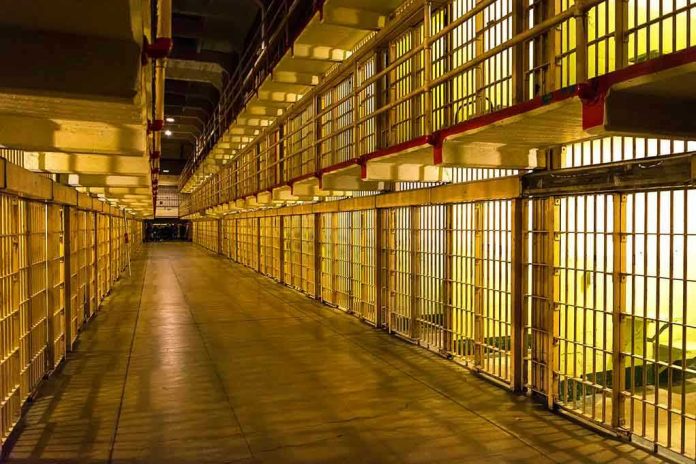
Thirty-five inmates died in a single day during Ecuador’s latest prison massacre, exposing how criminal gangs have transformed the country’s correctional facilities into deadly battlegrounds where the state has effectively surrendered control.
Story Highlights
- Thirty-one inmates died from asphyxiation and four others were killed in violent clashes during a November 9th prison riot
- The massacre represents the latest escalation in Ecuador’s prison crisis, where gangs control large portions of facilities
- Ecuador’s strategic location between cocaine-producing nations has turned its prisons into territorial warfare zones
- Government emergency measures and crackdowns have repeatedly failed to restore lasting order
When Prisons Become War Zones
The November 9th riot that claimed thirty-five lives wasn’t an isolated incident of prison violence—it was the predictable outcome of a correctional system where inmates suffocate to death while guards struggle to maintain basic control. The fact that thirty-one people died from asphyxiation suggests either deliberate use of smoke or gas as weapons, or overcrowding so severe that people literally couldn’t breathe during the chaos.
Ecuador’s prison system has devolved into something resembling a medieval siege warfare, where rival criminal organizations fight for territory while government forces remain perpetually outmatched. Since 2021, hundreds of inmates have died in similar massacres, creating a death toll that rivals active military conflicts in other parts of the world.
The Geography of Criminal Control
Ecuador’s misfortune lies partly in geography—positioned between Colombia and Peru, the world’s largest cocaine producers, the country has become a critical transit route for drug trafficking. This geographic reality has transformed Ecuadorian prisons into strategic assets for transnational criminal organizations seeking to control lucrative smuggling corridors.
The gangs operating within these facilities aren’t simply collections of common criminals. They represent sophisticated organizations with international connections, substantial resources, and military-style capabilities that often exceed what prison authorities can deploy. When these groups clash over territory or trafficking rights, the resulting violence reaches levels that would be considered warfare in any other context.
Government Responses That Don’t Work
Ecuadorian authorities have repeatedly declared emergencies, deployed additional security forces, and promised comprehensive reforms. Yet each government crackdown follows the same pattern: temporary calm followed by renewed violence that’s often deadlier than what came before. The September 2021 massacre in Guayaquil, where over one hundred inmates died, should have been a wake-up call.
The fundamental problem isn’t lack of government attention—it’s that reactive security measures cannot address the systemic failures that created this crisis. Chronic overcrowding, inadequate funding, corruption among staff, and the absence of meaningful rehabilitation programs have created conditions where gangs can establish de facto governance within prison walls.
The Human Cost of Institutional Failure
Behind the statistics of thirty-five dead and dozens injured are families who will never see their loved ones again. These weren’t necessarily violent criminals deserving of death sentences—many inmates in Ecuador’s overcrowded system are awaiting trial or serving sentences for non-violent offenses. The state’s fundamental obligation to protect people in its custody has been completely abandoned.
The international community has taken notice, with human rights organizations documenting the systematic breakdown of Ecuador’s correctional system. Yet meaningful reform requires political will, substantial financial investment, and long-term commitment—resources that Ecuador’s government has struggled to marshal while dealing with broader security challenges throughout the country.
Sources:
At least 27 inmates killed by ‘asphyxiation’ in southern Ecuador in wave of prison violence









